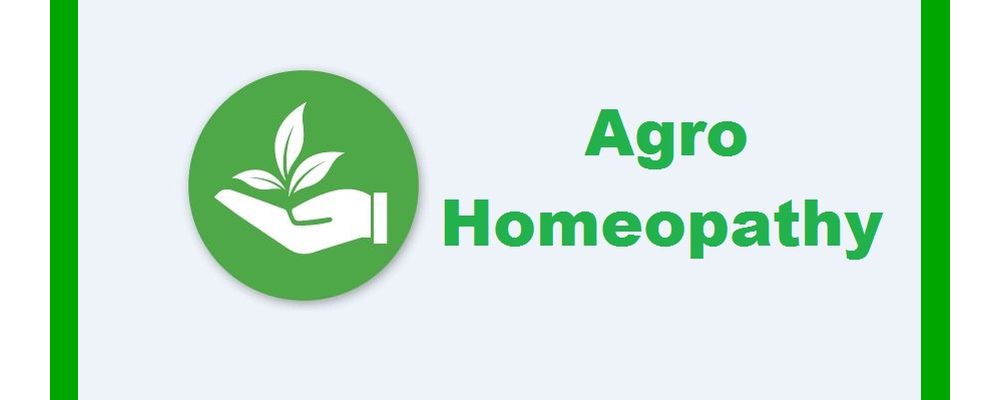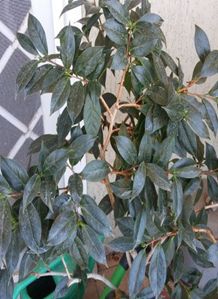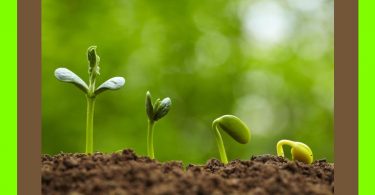Dr. Radko Tichavsky is a Czech born Mexican Agrohomeopath. He is a co-founder and director of Instituto Comenius in Mexico and author of Handbook of Agrohomeopathy, 2007 (Spanish) and Homeopathy for Plants, 2009 (Spanish), Organon de la Holohomeopatía and creator and teacher of Holohomeopathy.
He is now offering a one-semester virtual course in Holohomeopathy (in English). You can learn how to define and analyze holons and how to repertorize the specific homeopathic treatment beyond just disease or pest names. You can find out more here: www.icomenius.edu.mx
Many readers asked about Radko Tichavsky’s books. Below is a photo of them. They are available Spanish, Italian and Portuguese. For ordering or information: [email protected]
Editor’s Note: JT (Jenichen/Tichavsky) potency is often mentioned below. It is a centesimal dilution followed by 500 succussions or five hundred continuous turns with a wooden stick to the right and 500 turns to the left (if handling larger volumes). The JT potency frequently has a better reaction in plants and it is very important in preparation of live bionosodes.
Dear Dr. Tichavsky,
What can I do about the raspberry sawfly? Help! This is the 2nd year in a row that my raspberries have been completely consumed by the sawfly!
Location: Pittsburgh, PA 15204 (U.S.)
Warm to hot during the summer with an average rainfall of 4 inches each month during the summer. Frequent thunderstorms.
Thank you
Anne
Radko Tichavsky:
Dear Anne,
To stop recurrent attacks of raspberry sawfly (Monophadnoides sp.) two preventive treatments have to be done, one in the month of September, and another in the month of April, since larvae hatch in May and feed on plants for two to three weeks and after this they fall on the soil and form a cocoon.
From this the adult emerges the following year in the spring. Without elimination of the cocoons the pest will re-emerge year after year. The adults emerge and get their eggs into the leaves in May and the cycle repeats.
Then in September and in April a single application of Ricinus communis 6 CH should be made on the soil. The tincture is made from the fruits of the plant of Ricinus communis and the dynamizations are made according to traditional schemes, dilution 1:100 followed by 100 succussions in each potency.
You can also make the dynamization from commercial castor oil at 3 CH potency and spray it on the soil.
When the adult infestation is already in progress, in May, then apply Thymus vulgaris 3 CH, prepared from thyme essential oil. After the larvae emerge, if any appear on the plant, apply Boswellia sacra 3 JT, prepared from incense mother tincture, adding a pinch of cooking salt to the tincture.
The dynamizations are made in water, each 1:100 dilution is accompanied by 500 vigorous succussions. In this way you will protect your raspberries and cut the insect’s reproductive cycle.
Dear Dr. Radko,
I wonder if you can help me with my cherry tree? I live on the south coast of the UK and for many years I have had a great little cherry tree in my garden, which produces a heavy crop of cherries every year. However, for the past 5 or 6 years, most of the cherries are spoiled and un-usable because they have a tiny white worm inside them. I have looked for treatments, but haven’t found anything except a chemical spray that has to be applied as the fruit is forming, which, of course, I don’t want to do. I am now worried as I think it might spread to my new damson tree. What would you advise?
Many thanks
Liz Brynin
Radko Tichavsky:
Dear Liz,
It is probably Rhagoletis cerasi or the recently introduced species imported from the American continent Rhagoletis cingulata, and yes indeed both are polyphagous pests and could spread to your plum tree as well. This year you should be careful not to leave cherry fruits on the tree or on the soil after fruit picking.
The adults of the pest look like the common fruit fly but have characteristic black stripes on their wings. After oviposition the maggot takes three weeks to devour the pulp and then leaves the fruit to settle in the soil about 3 centimeters below the surface forming pupae (yellowish in color and cylindrical in shape) and waits until the next year to reproduce again.
In heavy clay soils the pupae can remain alive for up to two years in the soil and then emerge again as adults. So the opportunity to control the pest is in two points, first when the fruit is just formed we apply Boswellia sacra and Myrtus communis (common frankincense ground and prepared in alcohol to form the mother tincture) and prepared at 3 JT potency, mixed with Ruta graveolens 6 CH and applied when the fruit is just formed in the form of a spray. This application forms a protective repellent layer against adults.
To cut the insect cycle, treatments should be carried out at the second point, by tilling the soil after harvest, opening the first three centimeters of soil (a very shallow tillage) to expose the cocoons in the space under the canopy and allow them to be eaten by ants, or destroyed by cold or pathogenic fungi.
In case there is grass under the tree, it should not be cut during the year until after the harvest, and on the cut grass or on the soil, as the case may be, apply a homeopathic preparation from essential oil of Pinus silvestris or any native Pinus spp. from your holon at potency 3 JT together with Azadirachta indica 6 JT. Apply 5 liters per square meter to ensure the penetration of the remedy in the first 5 centimeters of soil.
The treatment must be repeated for two consecutive years and the third year only the remedy of Boswellia sacra Myrtus communis and Ruta graveolens will be applied to avoid adult visits from another part of the holon.
Dear Dr. Tichavsky,
This may be a question for an entomologist, but if not: My lawn is becoming infested with cicada killers-(wasps). Is there anything homeopathic that I can use to make them move somewhere else or get rid of them completely?
I live in Guilford Connecticut, U.S. (Zipcode 06437) and it is the summer right now and it’s hot and humid, high 80s. I have all kinds of trees (Northeast U.S.) both evergreen and deciduous, but I believe the cicadas come from the ground as do the cicada killers. But the cicada killers are destroying our entire lawn and I don’t want to use pesticides to kill them. They are huge and scary too.
Thank you
Robin Howard
Radko Tichavksy:
Dear Robin,
Sphecius speciosus called “cicada killers” are important predators of cicadas, which are one of major agricultural pests. “Cicada killers” look large impressive and menacing, however they rarely attack man and unlike other social bees, after shooing them away with a swat they usually retreat without attacking.
They dig their nests in the soil which generates patches in the grasses and is where they drag previously hunted cycads. However, these solitary wasps are active for just a few weeks and only live one season and do not reuse nests year after year.
You could apply Beauveria bassiana living bionosode 3 JT or Solenopsis invicta at 3 JT, to control the overpopulation of Sphecius speciosus, but you would probably turn to a column next year asking for advice on how to eliminate the excess of the cicadas, do you know what I mean?
I honestly think that the ecological function of “cicada killers” to control the cicadas is so important that it is worth enduring and forgiving a few spots on the grass caused by Sphecius speciosus.
You can be proud to live in a place where natural ecology still works to establish balances. It is very rare to see holons like this, and I’m telling you, it is a privilege to be able to witness it.
Dear Dr. Radko,
We live in Yuma Arizona ( mailing code 85364 ). What remedies would you suggest for olive trees, probably around 30 years old, that have dried out from not being watered enough for a few months. They aren’t dead. The summers are very hot and dry and the winters are cool and dry. The temperature varies from 48°F to 107°F and is rarely below 41°F or above 112°F. Rainfall in Yuma averages only 4 inches a year.
Thank you
Melissa
Radko Tichavsky:
Dear Melissa,
It is a great joy to have old olive trees on your property. Olive trees can live to be over 1000 years old and there are even olive trees that were planted in the time of biblical Jesus and are still alive!
You should make sure to maintain a natural green mulching around the trees that provides comfort and the ability for the other plants to share some of their moisture with them.
It is also important to keep ectomycorrhizae active, which are fungi that extend the roots of the tree and allow for increased water uptake even in prolonged drought conditions.
Also, arbuscular vascular fungi that coexist in olive tree cells produce growth hormones and are naturally inoculated from herbaceous plants native to each site. Mycorrhized olive trees can thus survive really extreme conditions.
You can plant native plant seeds mixed with cultivated plants such as marigolds, poppies, Asteraceae plants, oats, barley and native grasses as a green cover crop. If you have olive trees in your neighborhood that are older than yours, you can ask the owner for permission to extract a little of the topsoil, dissolve it in carbonated water, dynamize it to 3 JT potency and spread it under your olive trees.
In this way you will inoculate the spores of the mycorrhizal fungi that are more common in very old trees and thus the old trees will teach your younger olive trees to defend themselves better against drought and they will safely reach an advanced, healthy age in the future as well.
Hello Dr. Tichavsky:
I live in North Queensland, Australia (zipcode 4871) and have numerous Citrus trees that have Phytophthora, a fungal disease. I have used Silica. It did seem to strengthen the tree and some new growth, but branches are still dying back from the top. The climate is hot and humid with a distinct wet season (December–March) and dry season (April–November).
Thank you
Gregory
Radko Tichavsky:
Dear Gregory,
The cultivation of citrus trees must be accompanied with a good green cover and a correct mycorrhization. Mycorrhizas not only provide the trees better access to nutrients, but also more adequate access to water, and also occupy the place that for now usurps the Phytophthora sp.
The mycorhyzae must have a good collaboration with another great antagonist of Phytophthora sp. and these are Bacillus subtilis, Bacillus amyloliquefasciens and Bacillus licheniformis and all three are found in the gel of Aloe vera but also in many native cactaceas from your holon.
Extract some of the gel from an Aloe vera leaf, blend it in a blender with mineral water and prepare live bionosode at 3 JT in non-chlorinated water. Try not to till the soil between the citrus and only cut the weed when it reaches a height of twenty centimeters, and let it decompose in the place of the cut.
After each cut you must apply the live bionosode of Aloe vera gel to establish the Bacillus app. in the surface soil where they will collaborate in defense of your tree, fixing nitrogen, making available phosphorus and potassium, and producing growing hormones in your citrus, inducing systemic resistance to the fungal pathogens like Phytopthora spp.
Hello Dr. Tichavsky,
Thank you for helping me with my Lilac bush. If the lilac tree’s problem is indeed Pseudomonas syringae, might homeopathic Pseudomonas help? I coincidently just bought it in 30c last month for a totally different problem (in a human)!
Thank you
Linda S.
Radko Tichavsky:
Dear Linda,
It’s nice, to see these coincidences, and yes Pseudomonas 30 CH can also be a good preventive remedy for your lilac.
Hello Dr. Tichavsky,
The first photo shows how the camellia apple blossom thrived after overcoming a fungal attack cured by Thuya 6 CH and Melaleuca Oil 6 CH and followed by Glycine Max 6 CH and Taraxacum 3 CH, thanks to the prof. Radko Tichavsky.
Apple blossom
Thank you
Roberto Migliorelli
Radko Tichavsky:
Dear Roberto,
Thank you very much for your feedback. It is nice for me to see results in your plants and observe how you always look for new horizons in holohomeopathy. I am proud of your advances.






